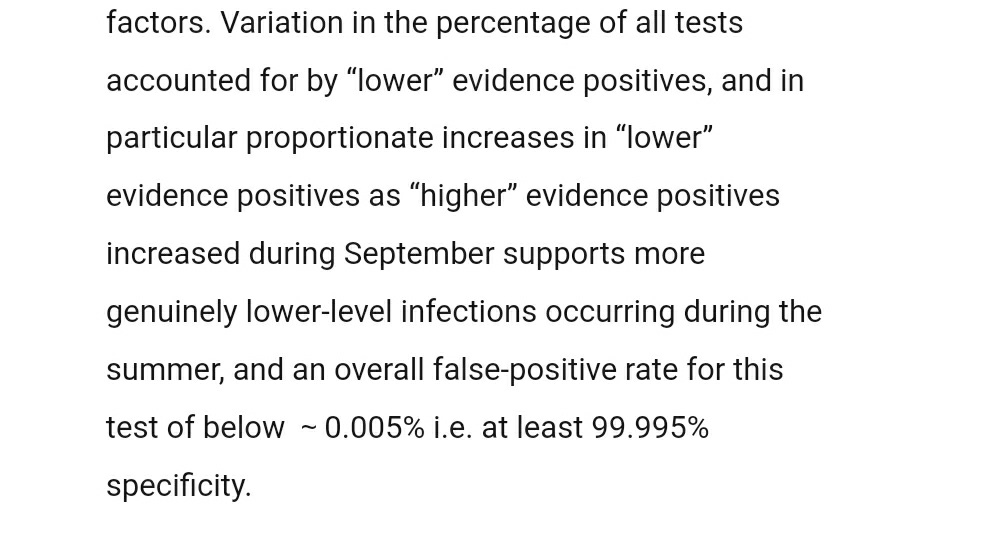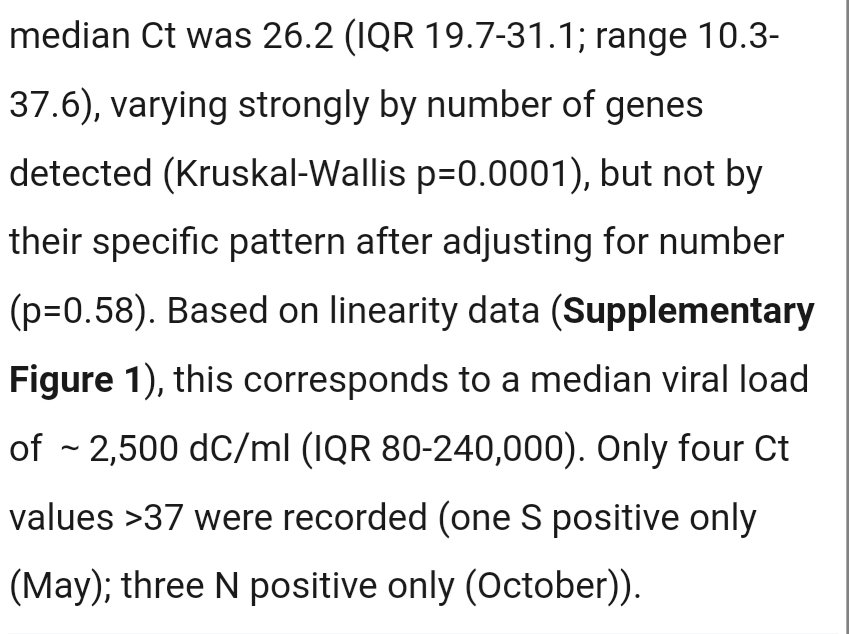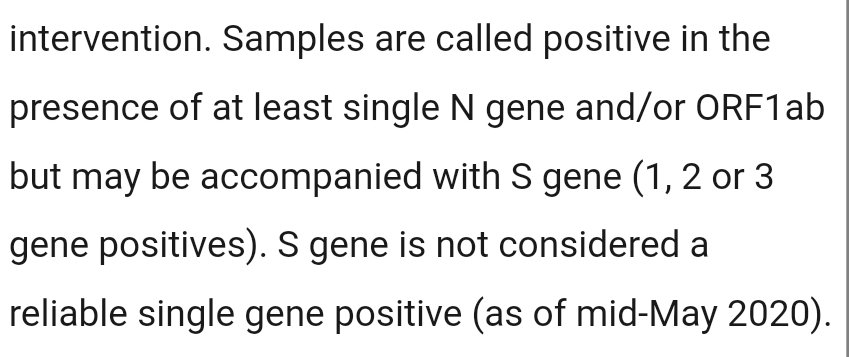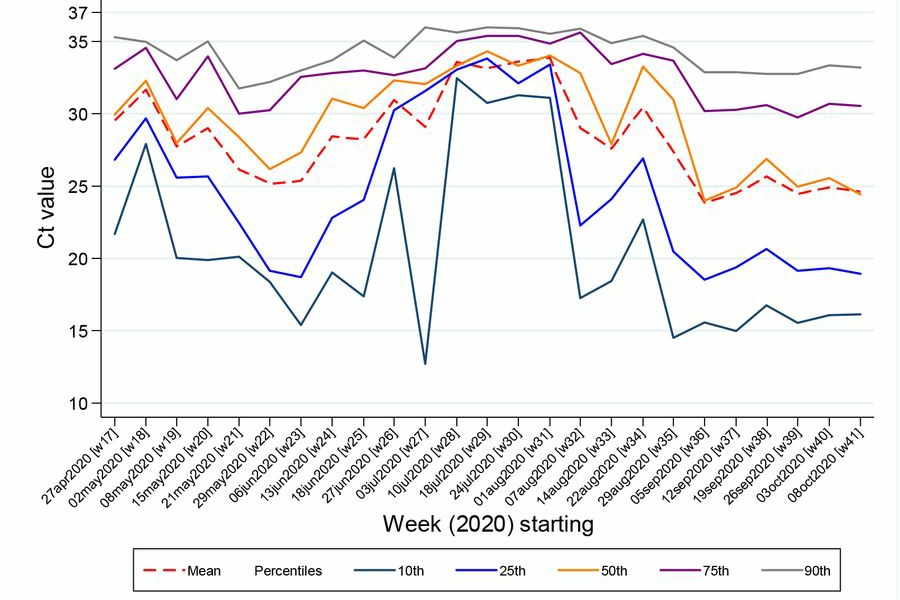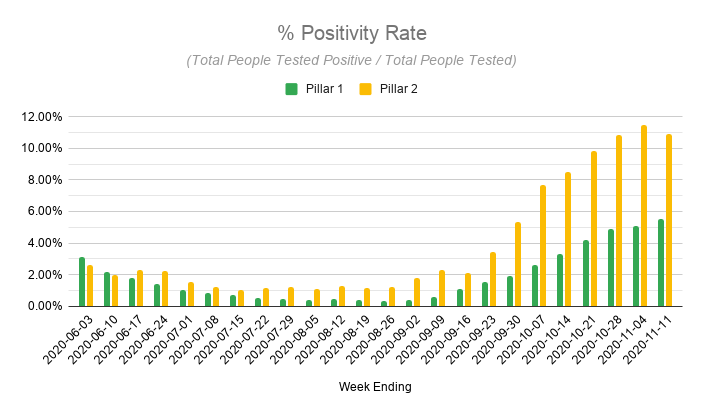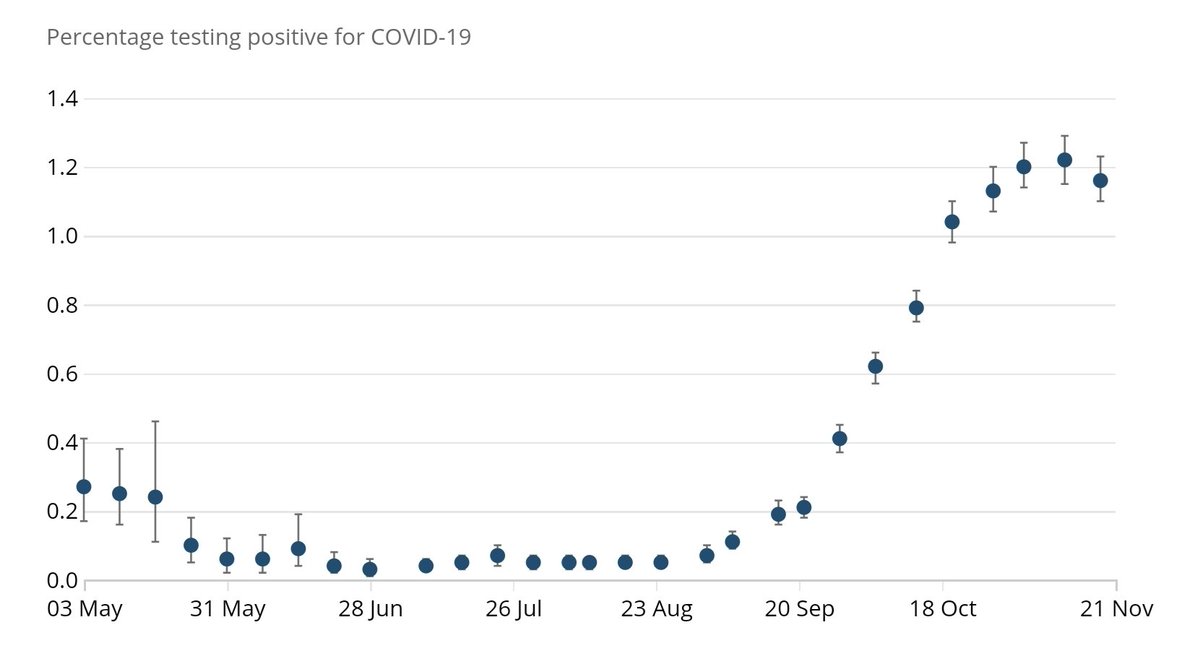A recent study of results from the ONS Infection Survey seems to directly contradict many of the arguments put forward by people denying we've seen a second wave.
Here are a few of the key findings... https://www.medrxiv.org/content/10.1101/2020.10.25.20219048v1.full-text
Here are a few of the key findings... https://www.medrxiv.org/content/10.1101/2020.10.25.20219048v1.full-text
1) Jumping ahead to the conclusion, it estimates the false positive rate for the ONS survey (whose tests are processed in the same labs in Milton Keynes and later Glasgow that handle many pillar 2 tests) was less than 0.005%.
That's 1 false positive for every 20,000 tests!
That's 1 false positive for every 20,000 tests!
2) The recent surge in cases did not come from overly sensitive tests picking up dead viral fragments or mostly mild, asymptomatic cases.
The average number of cycles needed to find a positive (CT) DROPPED from 34 to 25 as cases rose.
Which means people had a higher viral load.
The average number of cycles needed to find a positive (CT) DROPPED from 34 to 25 as cases rose.
Which means people had a higher viral load.
3) Samples aren't run for ridiculously high numbers of cycles.
Only 4 out of 1,892 positives from the ONS survey have EVER been found at a CT higher than 37.
One of those (in May) would no longer count as a positive today, because it only found one specific gene.
Only 4 out of 1,892 positives from the ONS survey have EVER been found at a CT higher than 37.
One of those (in May) would no longer count as a positive today, because it only found one specific gene.
4) In fact, about three quarters of positive test results from the ONS survey in September and October were found at below 30 cycles.
That's the purple line on the graph below, showing the 75th percentile.
That's the purple line on the graph below, showing the 75th percentile.

 Read on Twitter
Read on Twitter